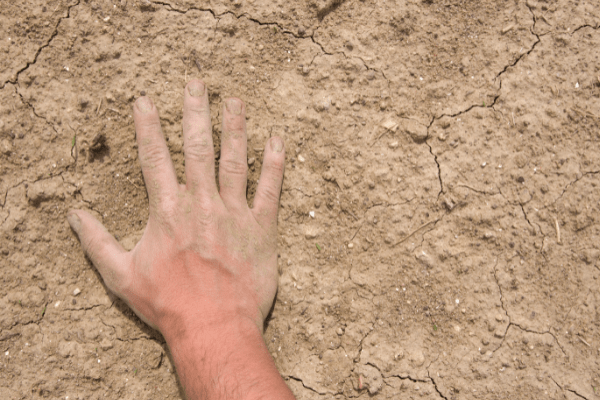In FFI’s first Quarterly Trends Talk, Tera discussed several macro forces shaping our world that food and farm businesses will need to adapt to—and, in many cases, already are. Think climate change, water shortages, COVID-19 and future pandemics, enhanced automation, changing demographics and so on.
Tera started big-picture by sharing a relevant new report called Global Trends 2040: A More Contested World, which identifies five major global challenges and several dynamic shifts that’ll affect how society deals with them. The authors then craft five scenarios for what the world might look like in 20 years—similar to what FFI helps food and farm entrepreneurs do in our scenario planning workshops. As Tera reminded listeners, thinking strategically about what the future may hold—and then devising action plans to address potential scenarios—is key to building resilient businesses.
Among the myriad macro forces and trends impacting food and ag, two big ones are already factoring prominently for the businesses we work with: climate change and water shortages, which are very much intertwined.
As a result of climate change, farmers have been grappling with uncharacteristic and disastrous weather events in recent years, including severe drought, ferocious downpours, floods, unseasonal temperatures, ice storms and straight-line winds. In 2021 alone, the American West is facing its worst drought in 1,200 years while more than 60% of the nation was experiencing drought as of May. This hot, dry July has likely made things worse.
In the Upper Midwest, climate change is triggering less frequent but much more intense rains. “We’re getting two-inch-per-hour gully washers versus two inches over a day or two, and that’s a real problem,” says Andy Larson, FFI’s farm outreach specialist. Fierce rains can sweep valuable topsoil away from farms, erasing all the hard work farmers put in to develop it. Or, equally problematic, “when rain comes that fast, the ground can’t absorb it,” Andy says. “It just sits there and can’t percolate into the soil profile fast enough to avoid causing flood damage to the crops.”
But farmers are adapting. Andy says even the most conventional ones are now building up organic matter in their topsoil. “Healthy soil with high content of organic matter acts as a buffer to some of this extreme weather by absorbing and holding additional water,” he notes. Cover-cropping is a popular strategy, Andy says, and farmers are getting creative about which types of cover crops they’re planting and where, and how they’re disseminating seeds.
As for water shortages, which are not exclusively due to climate change but certainly exacerbated by it, they’ve long plagued the western states, but the situation has grown especially dire. In California, which produces 25% of the nation’s food, water allocations to farms will be zero this year, requiring them to use fast-dwindling groundwater stores and even treated wastewater. Dairy farms are closing, rice production has been slashed, almond growers are cutting down trees and private-market prices for water have rocketed.
Though water may be more abundant farther east, farmers and ranchers nationwide know they too could be facing shortages as aquafer levels decline. “Harder rainfall events are less effective at replenishing aquafers,” Andy says. “If we’re depleting groundwater more quickly than it’s regenerating, and then that gets worse due to the shifting climate, suddenly it becomes much more tenuous whether our little breadbasket in the Midwest can produce the same volume and quality of crops as we have in the past.”
The effects of climate change and water constraints also work their way up the supply chain to impact manufacturers and brands. Valuable inputs become scarce, ingredient prices soar and more operational hurdles arise. “If 75% of water from the ground is used for food, beverage and agriculture, then wherever we have a water problem, we’re going to have a food and beverage problem,” says Brad Rostowfske, FFI FaB Cap Accelerator program manager.
Beyond stressing the crops that become food ingredients, scarce water availability hinders food and beverage processing, which requires a lot of it. “Traditionally, in most manufacturing businesses, the price of water is not a decisionmaker,” Brad says. “But as our water supply gets tighter, we start seeing its value.” Nowadays, he adds, plants are investing in closed-loop systems and embracing technological advances that use water more efficiently.
Here’s another way these issues affect brands: Consumers are now demanding that brands lessen their ecological impact—as well as that of their supply chains. “Twenty-five years ago, consumers cared about this stuff but wouldn’t pay a penny extra for it,” Brad says. “Today, people have woken up and are prioritizing it. Consumers prefer brands that don’t use too much water, are non-GMO, organic—all because of that macro trend of realizing what we’re doing to our ecology. This awareness is causing many opportunities for product development and marketing—and brands are even making money at it.”
The effects of climate change and water issues provide a foundation for entrepreneurs to strategize around potential futures for their businesses. Learn more about how FFI can help with scenario planning, and let us know your interest in upcoming sessions.

Last week we mined the Edible-Alpha® archives to highlight an insightful, inspirational and very relevant conversation for all food and farm entrepreneurs. Dive back into podcast #43 featuring Peter Robertson, founder of RP’s Pasta and co-founder of Tribe 9 Foods. He and Tera touch on SKU rationalization, brand refreshes, smart growth trajectories, knowing when to court outside investment and much more!
